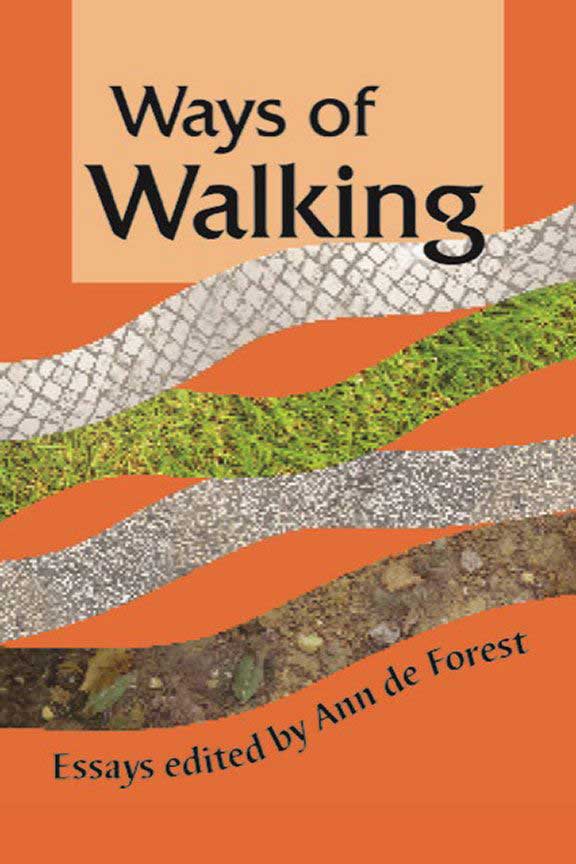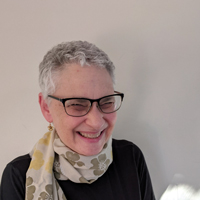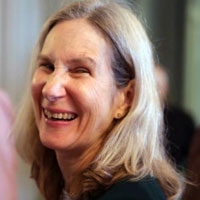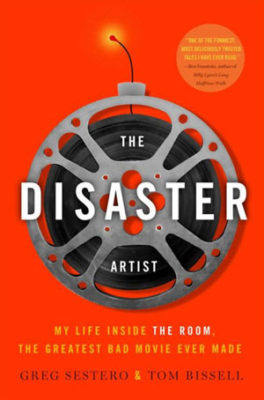
A Conversation with Ann de Forest, editor of the Anthology WAYS OF WALKING, New Door Press, 258 pages, Interview by Amy Beth Sisson
I met writer Ann de Forest many years ago, but during the pandemic we formed a new connection around poetry. We became critique partners and attended Claire Oleson’s Poetic Anatomies class. Ann is an accomplished writer in multiple genres who often focuses on the resonance of place. When she mentioned she was editing an anthology of essays about walking, I knew it was something that I, as a walker, reader, and writer, wanted to get my hands on. After reading the advance reader copy, I was impressed not only by the excellent essays but by the thoughtful structure of the collection. I was delighted to have this conversation with Ann about the project. (The conversation has been edited for length and clarity.) —ABS, April 2021
Amy Beth: Tell me how you came to edit this compelling collection of essays about walking.
Ann: In 2016, I was involved in Swim Pony’s Cross Pollination artists residency with Adrienne Mackey, JJ Tiziou, and Sam Wend. Together we decided our collaborative project would be to walk around the perimeter of Philadelphia. That experience, which I wrote about in an article for “Hidden City”, changed my perspective on many things: the city, my writing, and especially walking. After, whenever I told people about that project, I was amazed by how many wanted to tell me their own stories about walking. People like to talk about where they’ve walked and how they’ve walked. It struck me that there were all these possibilities for writing about walking.
Amy Beth: It’s funny that you mention people wanting to tell you their stories because after I read the collection, I wanted to tell you one of my walking stories. When my youngest was in sixth grade, we lived in Silicon Valley. He walked a mile to school. He was one of the few students from our neighborhood who did this. Some parents expressed their concern for his safety. I felt like they were worrying about the wrong risk. They were worrying about stranger danger which is rare, rather than the slow dangers of obesity or of climate change.
Ann: I love the idea that we focus on the wrong danger. On the first day of our walk around Philadelphia we encountered that. People at a driving range on City Line Avenue were saying, oh, you better be careful when you get up to X part of the city. These where white guys, and their fear of other parts of the city is fundamentally racist. It’s all the same city, but we mentally create these danger zones in our heads. And of course, that wasn’t the experience for us at all. The most dangerous places on our walk were the many places not designed for pedestrians.
When you walk you see how connected everything is. That one thing flows into the other. The other thing your story makes me think of is how the automobile dominates and controls our environment. So the “wrong danger” is not just the slow dangers like climate change. Cars themselves are lethal. Think how many car accidents there are. Yet we’ve built this society and infrastructure around the automobile and label that mode of transportation “safe.”
Amy Beth: This makes me think of the essay in the collection by Tom Zoellner, “Nobody Walks to LAX” about airports. They’re not created with walking in mind. That was one of the most surprising stories for me.
Ann: One of Tom’s great insights is how hard it is to walk in or out of airports but you walk so much once you get inside. Inside the airport walking is demanded of you. And it’s not the most pleasant walking.
Amy Beth: Several stories explore how identity influences walking. In your essay “Aberrant Angeleno,” you talk of your vulnerability as a woman walking alone. There is that striking moment in Lena Popkin’s essay “Tread Lightly” where men ogle her while on a walk with her oblivious father and brother and her struggle to get the men who love her to understand. Dwight Sterling Dunston’s essay “A Walk with Hawk” tells a compelling story of his father’s peril while walking in a white neighborhood as a Black man. Can you talk a little bit about that contradiction of things being both safer than we think they are and for some more dangerous?
Ann: Who you are influences how you walk. For some people, walking is not as easy as for others. Walking while Black is perilous. We see the tragedy of Ahmaud Arbery’s murder and other stories about people who are unsafe in certain places or neighborhoods. Places anybody who’s white doesn’t have to think about being in. It was important to me to get that perspective.
Victoria Farmer, who has cerebral palsy, wrote about her experience walking in London. She wanted to walk through London like Virginia Woolf, but she had to come to terms with her differences. She couldn’t walk as freely and unencumbered as Woolf. There’s this moment where she and her husband are waiting for a bus on a day that she is using her wheelchair. The bus passes her by because there is room for only one wheelchair. Disability is another identity that influences one’s way of walking in the world.
Amy Beth: In those diverse ways, the anthology takes the reader through history, time, and necessity.
Ann: Necessity is an important consideration. There’s a story in the anthology where the walk was a necessity. Yasser Allaham in “Crossing to Jordan” wrote of having to leave Syria in 2013 during the war. His city and his university were bombed. His family got out but he, because of various technicalities, was not able to go with them across the border. He spends a month in a no-man’s land between Syria and Jordan, trying to figure out how to get there. It reminds us that not all walks are leisurely or planned. And this same forced movement is happening right now. I’ve heard two million people have left Ukraine, many on foot. [Note: as of our conversation on 3/14/2022. The number is now much higher.]
Amy Beth: In the preface you say walking is subversive. Tell me more about that.
Ann: Walking is counter to the things our culture values. We live in a society that values speed, efficiency, and the arrival more than the journey. Walking contradicts all those things.
Nancy Brokaw’s essay, “The Hiker and the Flâneur” opens the collection with a history of walking and the ways writers and thinkers have looked at walking. Both the idea of a hike and the idea of being a flaneur, or someone who ambles through the city, are inventions of the modern era going back to the late eighteenth to early nineteenth century. They arise from the anxiety that’s attached to living in a fast-paced civilization. Walking is an antidote. Our culture tells us we have to have all this stuff to get through daily life. To walk is to say, I have my own body and my two legs, and I don’t really need any more than that.
Kalela Williams, at the end of her essay, “The Three Century Walk” talks about marching in protest after the killing of George Floyd, and the power of bodies walking together demanding justice. The protest marches of the summer of 2020 belong to a long legacy of walking alongside others in solidarity and protest to effect change. That’s another form of subversive walking.
Amy Beth: That brings me to Mark Geanuleas, whose subversive act is to walk absolutely everywhere.
Ann: Mark made a decision that he wasn’t going to use any other form of transportation. He lives in Lancaster and his parents live in Elkins Park. If he wants to visit them, he must decide to walk about seventy-five miles to Philadelphia. He also does a very long walk every year. For him it’s a philosophical choice about how to live. For Mark, to live fully in the present, walking is the only option.
Amy Beth: Which shows in another way the different ways people with different bodies experience walking. I was also struck by the idea that walking allows us to connect more deeply with history.
Ann: Kalela Williams writes about giving tours of Black history in Philadelphia so that people will see things that they might not notice otherwise because not all of it is acknowledged or commemorated. Walking in her case is a kind of commemoration and a way to be a witness to the past. When you walk you’re so much in the present tense, but I think you’re also more attuned to the fact that others have walked before you.
Jeeyeun Lee is a visual artist who has done amazing walking projects. For her the walk itself has a performative aspect as well as an aspect of discovery and witness, it’s almost like a form of moving land acknowledgment. In her essay “100 Miles in Chicagoland” she explores how Chicago got to be what it is today, with buildings and highways constructed on what were once native paths and native lands. She is walking with the heightened consciousness of what was there before, exposing the theft and displacement that underlies American expansion and settlement.
In a similar vein, Nathaniel Popkin’s essay “Finding Purchase: Walks of Witness on Stolen Land” is about tracing the steps of the Walking Purchase, the theft of Delaware Indian lands in 1735. He conceives his walk as an act of penance, and so it’s very ritualistic. He’s experiencing the river he loves and grew up alongside, but that he also realizes is part of stolen land. He links this to a walk along another river, in Chile, also wrested from the Indigenous inhabitants to build a hydroelectric dam.
Amy Beth: I noticed the strong connections between walking and writing. Kathryn Hellerstein in her essay “Walking on Shabbes” drafts poems while walking.
Ann: Yes, and Rahul Mehta in his essay “Tunnels” writes that he is tapping the essay we are reading on his phone while walking in Carpenter’s Woods.
Christine Nelson’s essay “Five Thousand Walks Toward Thoreau’s Journal” is about the relationship for Thoreau between walking and writing. In his diaries, he’s “keeping track” of the things that happen to him. I love that image because the idea of keeping track is related to the tracks you make while you’re walking. And that idea that the marks you make on a page look like tracks on a page. For Thoreau, it’s not just about walking; it’s about walking in order to be a writer, to be a thinker, to experience the world in a sauntering way. It’s not that there’s one or the other, but that those things become part of a holistic creative life.
Amy Beth: What are some of the other themes or surprises that emerged?
Ann: I was surprised so many writers wrote about their fathers. There are a few beautiful essays about walking with fathers but only one essay about a mother: Mickey Herr’s essay, “A Walker’s Paradise.” It explores how her recovery from leukemia and getting stronger intersects with her mother’s getting weaker and more immobile. I was also surprised that given the power of nocturnal walks in literature there were only a few on the topic. Justin Coffin’s “The Way Home” is about walking through suburban subdivisions at night; it’s a walk he doesn’t want to be taking. When he arrives he experiences a revelation about home.
It was a delight to discover how the essays speak to each other. The anthology feels like this great conversation. Read all the essays and you may end up with an expanded view about what walking is and maybe it will encourage you to go out for a walk yourself.
 Amy Beth Sisson lives in a small town outside of Philadelphia. Her day job is in software development. She tells programmers what business people want and tells business people why they can’t quite have it. She recently completed the University of Pennsylvania’s online Modern Poetry course, ModPo. Her fiction has appeared in Enchanted Conversation and Sweet Tree Review. Her non-fiction for children has appeared in Highlight’s High Five and Fun for Kidz magazines.
Amy Beth Sisson lives in a small town outside of Philadelphia. Her day job is in software development. She tells programmers what business people want and tells business people why they can’t quite have it. She recently completed the University of Pennsylvania’s online Modern Poetry course, ModPo. Her fiction has appeared in Enchanted Conversation and Sweet Tree Review. Her non-fiction for children has appeared in Highlight’s High Five and Fun for Kidz magazines.
 Ann de Forest’s work often centers on the resonance of place. Her short stories, essays, and poetry have appeared in Coal Hill Review, Unbroken, Noctua Review, Cleaver Magazine, Found Poetry Review, The Journal, Hotel Amerika, Timber Creek Review, Open City, and PIF, and in Hidden City Philadelphia, where she is a contributing writer. Her anthology WAYS OF WALKING WAS inspired by having twice walked the entire perimeter of Philadelphia, the city she’s called home for three decades.
Ann de Forest’s work often centers on the resonance of place. Her short stories, essays, and poetry have appeared in Coal Hill Review, Unbroken, Noctua Review, Cleaver Magazine, Found Poetry Review, The Journal, Hotel Amerika, Timber Creek Review, Open City, and PIF, and in Hidden City Philadelphia, where she is a contributing writer. Her anthology WAYS OF WALKING WAS inspired by having twice walked the entire perimeter of Philadelphia, the city she’s called home for three decades.
Read more interviews here.



